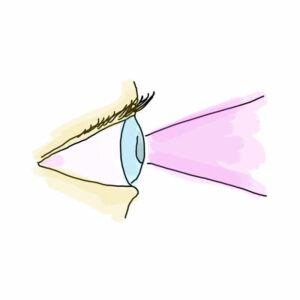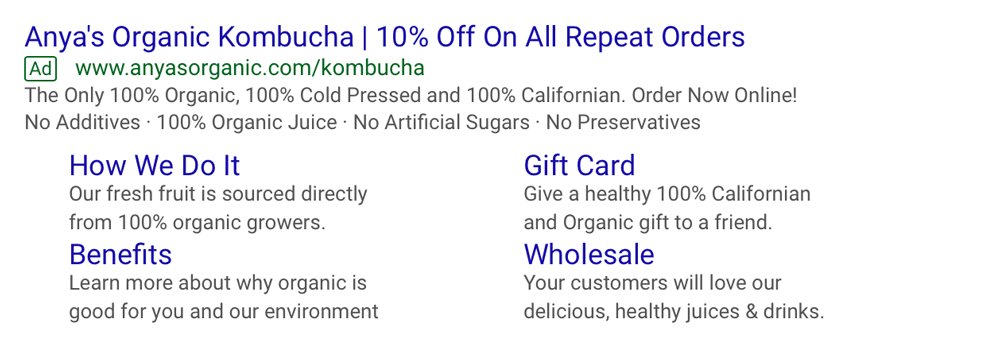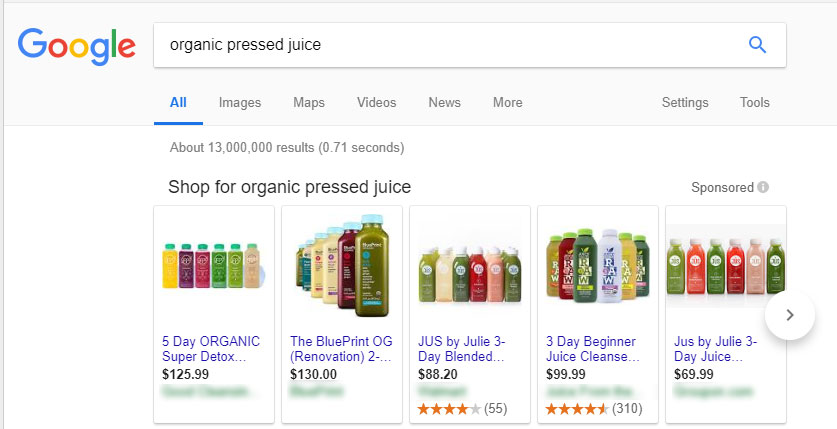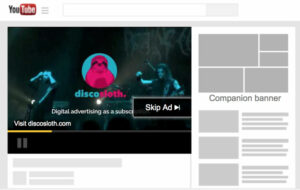
How People See Advertising
2.1 Why Did We Learn to Ignore Ads?
If you’ve spent any amount of time in the digital marketing world, you’ve probably heard about terms like “banner blindness” or “advertising blindness”. But what does it actually mean, and how can we fight it?

I have to confess that I create online ads for a living, and I also use an ad blocker. Who wouldn’t? One of the benefits of using an ad blocker is that you can see the exact amount of ads that have been blocked on each page.
Guess how many ads you see while watching a YouTube video? Maybe five or ten? No, right now Opera is telling me it’s blocked 55 ads on just ONE video. We see thousands of ads per day. Long ago we started, consciously or not, trying to ignore web advertising.
Ad blindness is the phenomenon of users ignoring every ad they see, or anything that even looks like an ad. Ad blindness on the internet developed along with the rise of ads themselves. The more you see, the more you ignore.
It doesn’t mean that, as advertisers, we don’t have a chance. We still have the possibility of gaining visibility. We just need to understand that as the internet evolves, customers evolve too and are smarter about how it works. So should our ads. No one likes being told what to do! And we most certainly don’t want to see 55 different companies telling us what to do.
The first thing to remember is that salesy ads don’t work anymore.
Users want to be educated, entertained, and informed. Or, they just want to feel something (happiness, sadness, nostalgia, etc). Whether it’s a video, display ad, or even just a search ad, today’s audiences want to be given a chance to choose the product by its benefits, and not just which ad can write BUY NOW or CLICK HERE with a bigger font.
2.2 What are Search ads?

Search advertising ads are placed within a search engine’s results page. They have a similar format as organic results (unpaid) and are usually on the top ( first 3-4 results) and sometimes a few on the bottom of the results.
Search ads work based on the search term entered into the search engine. The most popular search engines are Google, Bing, Yandex, Baidu, Yahoo, and DuckDuckGo.
The benefit of search ads is that you can respond directly to someone’s issues, questions or needs. As opposed to social media advertising, you don’t have to convince your audience that they need detox juices: they already know that, and are looking for some to buy.
2.3 What are Display ads?

Display ads (or display advertising) is a form of online advertising on websites or apps that use image ads, rich media ads, video ads or text ads. Google’s display advertising reach 80% of global internet users.
Display ads catch users whenever they are surfing online, but not searching for a specific product or service. Because of this the main goal of display advertising should not be getting clicks, but to drive brand awareness.
There are multiple ways you can target users via display advertising. One of the most important is remarketing. Remarketing is used for websites that want to remind previous users about themselves. It can be used to target users that visited a specific product on your website but didn’t purchase, and “follow them” around the internet showing the exact product they were interested in.
You can target users based on:their interests and habitswhat they’re actively researchinghow they’ve interacted with your business
We won’t cover display ad formats in detail as they change constantly, but you can see more formats on Google’s site.
2.4 What are Shopping ads?
Shopping ads are a type of ads that show more detailed information about the product you sell. Usually Shopping ads contain an image, price, brand, a title and links directly to the item in your store. The ads are shown on top of the search engines. It’s not available in all countries, so check the availability before you start. Most shopping ads are created on Google, although Bing has an option for it too.
Before you start, you’ll need to create a Merchant Center account where you’ll upload all details about the products you want to advertise. Make sure you follow the guidelines or your product will be rejected.

These type of ads work very well, as they give your audience a visual aspect of the product before clicking. The downside is that you cannot target specific keywords. Google will choose what search queries you ads will appear for based on the product description and title.
2.5 What are video ads?
Video ads (or video advertising) are mostly known as YouTube ads. They appear when someone is searching or watching a YouTube video. Instead of per click, you pay for each view. The ads are created via Google Ads.

Same as display ads, the benefit of running YouTube ads is not in getting clicks or sales. It’s about brand awareness…and possibly annoying people that just want to listen to some music.
It’s very important to execute video ads correctly, as users ignore most ads on YouTube. You want to make sure you create something that will catch their attention in the first 2 seconds. The approach is different than TV ads. Since they’re skippable (unlike TV ads) they need to be catchy, funny, smart, and speak to a user’s emotions more than anything else. A common fault of YouTube advertisers is going into too much detail or making a video too long.
Our imaginary client, Anya’s Organics, was thinking about a YouTube campaign. They already had a 30-second TV spot produced, but this video wouldn’t do well on YouTube. Anya’s Organics needs a short, 15-second, inspirational ad with a primary focus on branding rather than sales. Views are extremely cheap and highly targetable on YouTube, which means someone who sees an Anya’s Organics video will also likely see some search ads later on, as well!
You can also target users that have already visited your website (remarketing), based on specific interests, or even just a specific channel. You can find specifications for YouTube ads here.
